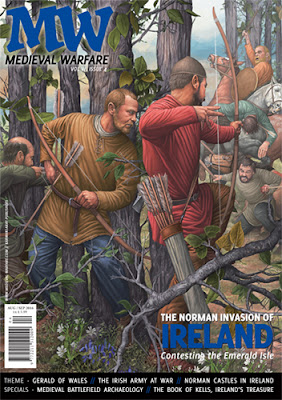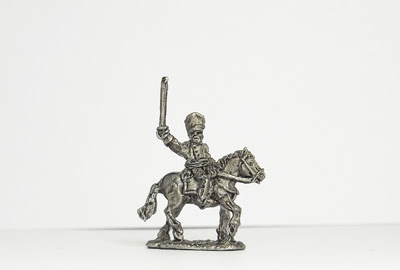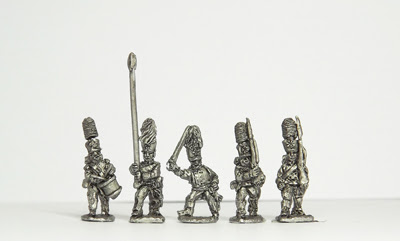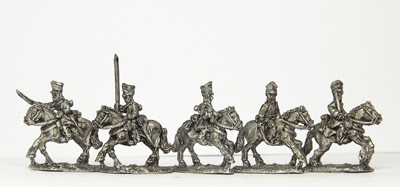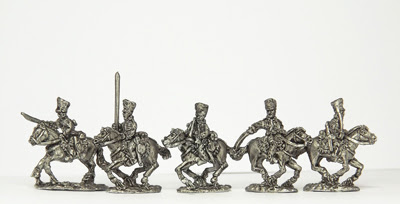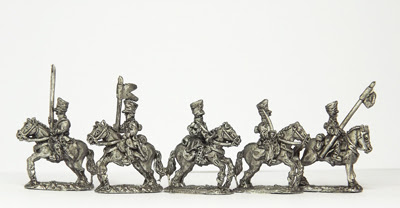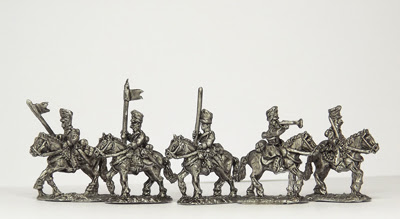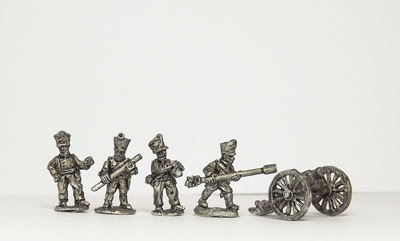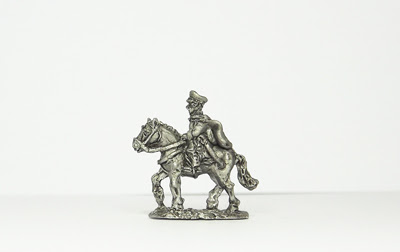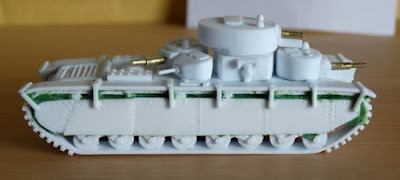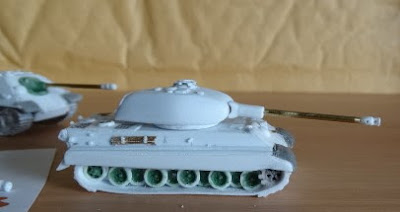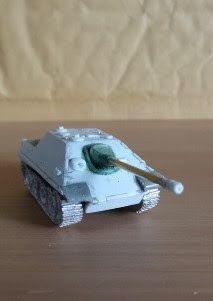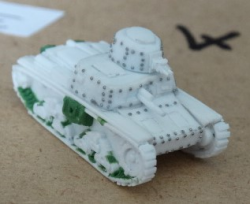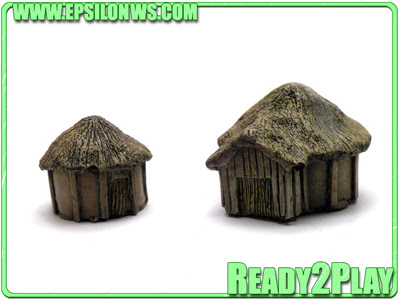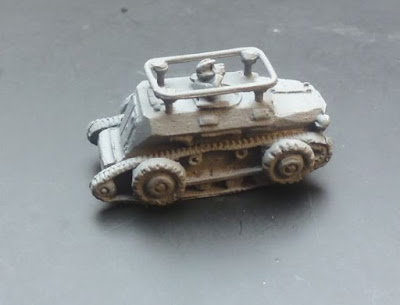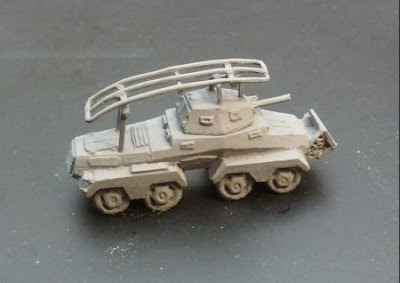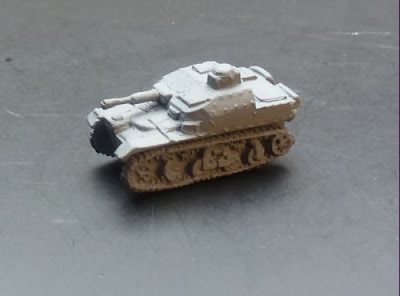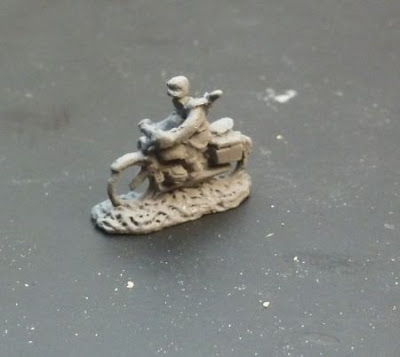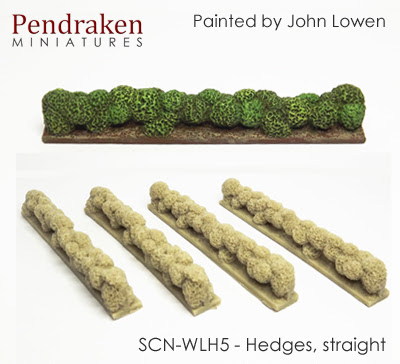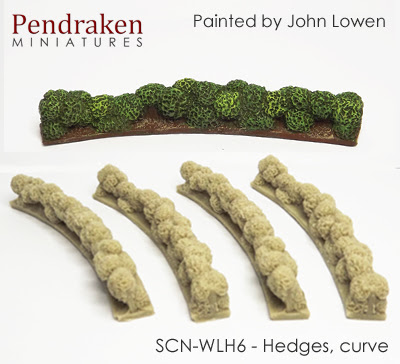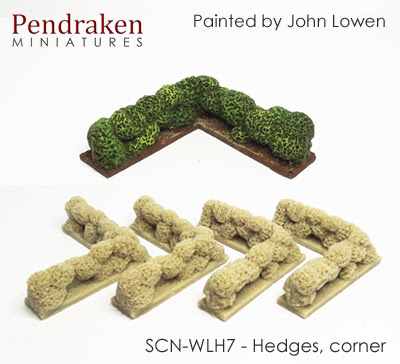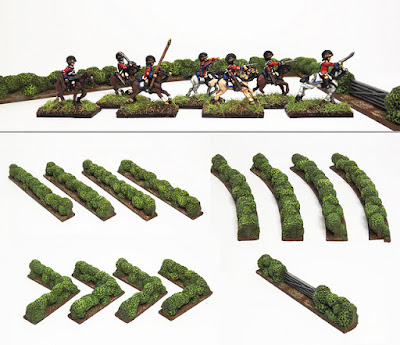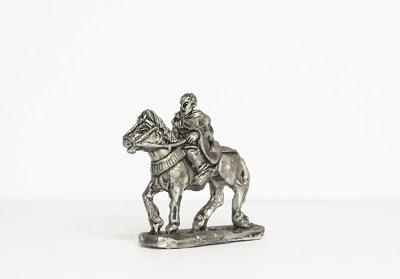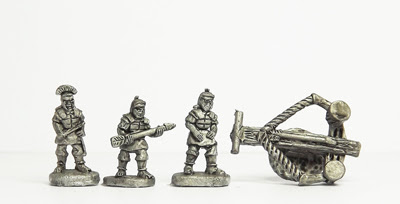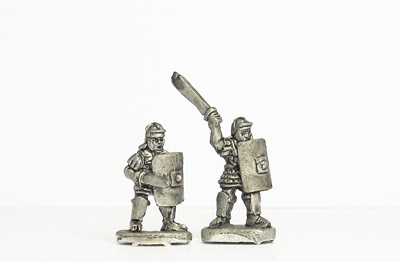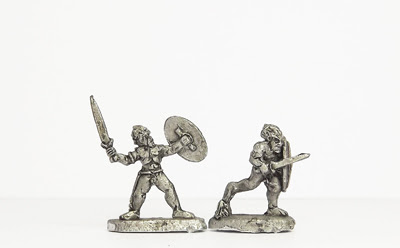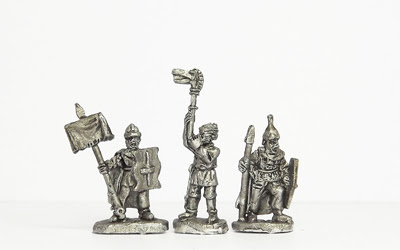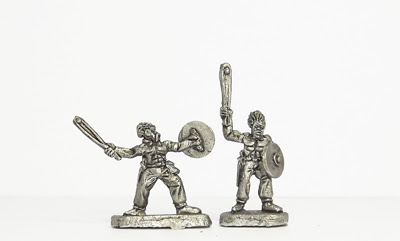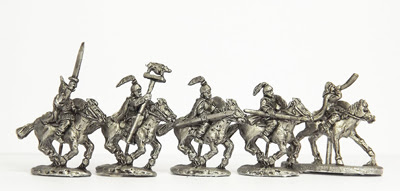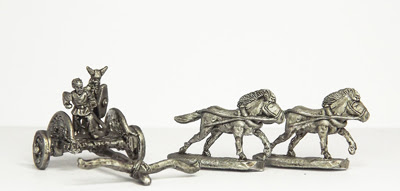27 Jul 2016
Medieval Warfare VI-4, Aug-Sep 2016
The Norman invasion of Ireland
Theme: Katrina Ingram, "An introduction to the theme - The Norman Invasion of Ireland"
In 1166, Dermot Mac Murragh, the defeated King of Leinster, travelled to England to ask King Henry II for assistance, who in turn sent some of his nobles back with Dermot to help him reclaim his land. This plea for help paved the way for Henry’s invasion four years later in 1171 and allowed Henry to proclaim himself the overlord of Ireland without having to draw his sword. Yet contrary to popular belief, this was not the first time the Normans had considered an invasion of Ireland.
Theme: Murray Dahm, "Gerald of Wales on the 'conquest' of Ireland"
Gerald of Wales – or Giraldus Cambrensis as he is known in scholarly volumes – wrote two works which have been immensely influential and are of the utmost importance for, not only the Anglo-Norman invasion of Ireland, but for Medieval Irish history in general. These two works, the Topographia Hibernica (Topography of Ireland) and the Expugnatio Hibernica (Conquest of Ireland), are flawed but essential reading and we will see much of them in these pages.
Far from being an exclusively Irish phenomenon, ‘cattle raids’ were a feature of warfare throughout Christendom and beyond, as demonstrated by this manuscript illumination from the earlyfourteenth- century Manessa Codex produced in North- Central Europe (Universitätsbibliothek, Heidelberg).Theme: Paul V. Walsh, "Irish warfare during the Norman invasion"
The commonly held view of the Anglo-Normans’ Irish opponents is of lightly armed, poorly organized forces incapable of withstanding the charge of knights due to an exclusive reliance on the unconventional tactics of cattle-raids and woodland ambushes. A closer look at both Anglo-Norman and Irish sources, however, presents a different picture, demonstrating a more sophisticated approach to warfare.
Theme: Alistair Black, "A look at ringforts in Ireland"
The ringfort is one of the most numerous archaeological monuments in Ireland, with over 60,000 identified examples across the island. They can be seen across the countryside, often only visible as a faint small circular bank with and external ditch.
Theme: Erich B. Anderson, "The high king fights back - Reclaiming the throne"
For too long High-King Ruaidrí Ua Conchobair failed to properly respond to the threat posed by the Norman troops as they helped Diarmait Mac Murchada reclaim his kingdom. Yet after the sudden death of Leinster’s ruler in May 1171, Strongbow and the other foreign soldiers were left in an extremely vulnerable position, for the majority of the Irish chiefs turned against them; even many who were previously loyal to Diarmait.
Richard de Clare’s effigy in Christ Church Cathedral, Dublin was destroyed in 1562 during a partial roof collapse. It was replaced by the effigy of an unidentified knight.Theme: Sidney E. Dean, "The life and times of Richard de Clare"
“His name was greater than his means, his descent greater than his talents, and his rights of inheritance greater than the property in his possession”. This description of Richard de Clare, the former Earl of Pembroke, was penned by the Norman-Welsh chronicler Gerald of Wales in his History of the Conquest of Ireland. It captures the essence of de Clare on the eve of his meeting Dermot McMurrough (Diarmait mac Murchada), the deposed king of Leinster. It would prove a fateful encounter for both men, and for Ireland.
Theme: Konstantin Nossov, "Angol-Norman castles in Ireland"
In 1169, the first Anglo-Norman detachment landed in Ireland. Success accompanied Norman knights’ English descendants, who soon strengthened themselves in eastern Ireland. The Irish held the west and north. Having very few castles at the moment of the invasion, the Irish were unable to hold their lands. The situation greatly resembled the Norman Conquest of England. To fortify their position on the occupied lands, the Anglo-Normans built numerous castles and some cities.
Theme: Sean McGlynn, "The Waterford Massacre, AD 1170 - Slaughter"
The English invasion of Ireland was, like any other medieval colonial conquest, a brutal affair. Many English (as we should call the Anglo-Normans by this stage) were already acclimatized to the extremes of warfare on the Celtic fringe in Wales and Scotland, but in Ireland they were still capable of being shocked.
Theme: Daniel Mersey, "A picture from the Topographia Hiberniae"
Gerald of Wales’ Topography of Ireland was written around 1186 to 1188. It is the most in-depth study we have of Ireland during this period, although later Irish writers disputed the veracity of his work. This is not surprising, given that some of Gerald’s assertions in the book’s first two parts suggest that Irish cocks crow differently to those elsewhere, that an island exists west of Connacht where corpses do not putrefy, and a story of a wolf talking to a priest.
The same site, but now at the time of the original battle. On the ground, mixed with the dead and injured, we can see some of the various small items that will help archaeologists confirm the location of the battlefield.Special: Peter van Dop, "The added value of battlefield archaeology - One skeleton does not an army make"
Not infrequently, the media picks up on ‘archaeological’ discoveries pertaining to evidence for medieval battles. However, the reports are often simplified, debatable, or even downright wrong. With just a little bit of historical research, the information can be improved significantly.
Special: Peter Konieczny, "Ireland's medieval treasure - Book of Kells"
It is considered by many to be the most beautiful book created in the Middle Ages, perhaps the most beautiful book ever made. It is now called the Book of Kells, and if you want to see it you will have to join the thousands of visitors who come each day to the Old Library at Trinity College Dublin.
Movie knights: Murray Dahm, "Medieval Normans and Irish on film - Hidden cinema"
In trying to keep with this issue’s theme it becomes quickly apparent that films of medieval Irish history are almost nonexistent. When it comes to the Normans on film we seem to be on safer and more copious ground, for there are many Normans on film. All offer insights for medieval warfare and history but, as always, the story is more complex than it, at first, appears.
Medieval Warfare
18 Jul 2016
1813-15 Napoleonic Prussians Released by Pendraken Miniatures
We're continuing to slowly expand our Napoleonic ranges and we've now got the Prussians ready to take to the field. And there's even a Blucher figure to rally them on!
Napoleonics 1813-1815 Prussian
NPR1 Line/fusiliers, march attack
NPR2 Line/fusiliers, firing
NPR3 Line command
NPR4 Line mounted officer (5) £1.65
NPR5 Guard infantry, march attack, inc. command
NPR6 Guard mounted officer (5) £1.65
NPR7 Landwehr, inc. command
NPR8 Dragoons
NPR9 Hussars
NPR10 Uhlans
NPR11 Landwehr cavalry
NPR12 6pdr guns with line crew (3)
NPR13 6pdr guns with horse crew (3)
NPR14 7pdr Howitzer guns, with line crew (3)
NPR15 7pdr Howitzer guns, with horse crew (3)
NPR16 Mounted General + ADC (2) £0.80
NPR17 General Blucher (1) £0.70
(Packs contents as shown, priced at £4.95 each unless shown otherwise)
Army Pack - Contains 3 x NPR1. 1 x NPR3, 5, 8, 12. £31.00
We hope you like them!
Pendraken Miniatures
Napoleonics 1813-1815 Prussian
NPR1 Line/fusiliers, march attack
NPR2 Line/fusiliers, firing
NPR3 Line command
NPR4 Line mounted officer (5) £1.65
NPR5 Guard infantry, march attack, inc. command
NPR6 Guard mounted officer (5) £1.65
NPR7 Landwehr, inc. command
NPR8 Dragoons
NPR9 Hussars
NPR10 Uhlans
NPR11 Landwehr cavalry
NPR12 6pdr guns with line crew (3)
NPR13 6pdr guns with horse crew (3)
NPR14 7pdr Howitzer guns, with line crew (3)
NPR15 7pdr Howitzer guns, with horse crew (3)
NPR16 Mounted General + ADC (2) £0.80
NPR17 General Blucher (1) £0.70
(Packs contents as shown, priced at £4.95 each unless shown otherwise)
Army Pack - Contains 3 x NPR1. 1 x NPR3, 5, 8, 12. £31.00
We hope you like them!
Pendraken Miniatures
15 Jul 2016
New WWII Models by Pendraken Miniatures
New WWII models on there way to Pendraken HQ to be cast up. Sculpted by Martin (mart678)
A Russian Monster
A New King
A Jagdpanther
New M11/39 Tank
Pendraken Miniatures
A Russian Monster
A New King
A Jagdpanther
New M11/39 Tank
Pendraken Miniatures
12 Jul 2016
Dark Age Huts Available from Pendraken Miniatures
The range of 10mm pre-painted buildings available from Escenografia Epsilon has been expanding rapidly over the past year or so, and this month we've got a new pair of Dark Age round huts for you!
These look great and could easily do duty in several other periods/genres as well, so should appeal to a lot of folks.
EPS-DAS02 - Dark Ages huts - £9.95
These can be found in the Epsilon section of our website, along with all of their other great buildings: We'll have stock of all of these with us at the shows, starting with Claymore in August, then Border Reiver and Colours in September.
Epsilon produce a variety of products in other scales as well, so it's always worth having a browse through their website:
Pendraken Miniatures
These look great and could easily do duty in several other periods/genres as well, so should appeal to a lot of folks.
EPS-DAS02 - Dark Ages huts - £9.95
These can be found in the Epsilon section of our website, along with all of their other great buildings: We'll have stock of all of these with us at the shows, starting with Claymore in August, then Border Reiver and Colours in September.
Epsilon produce a variety of products in other scales as well, so it's always worth having a browse through their website:
Pendraken Miniatures
8 Jul 2016
Pithead Miniatures, Releases New Models
Pithead Miniatures, Releases New Models
GV194 Saurer Sdkfz 254
The Saurer Sdkfz 254 wheel cum track vehicle was a fascinating Austrian designed armoured artillery observation vehicle that could be driven on wheels or on tracks. Between 128 and 140 of these vehicles were employed from late 1940 onwards. Vehicles have been positively identified serving with the 7th, 11th , 14th and 15th (Afrika Korps) Panzer divisions but due to the numbers produced they must have seen service in other divisions as well .
Sdkfz 232 (8-Rad)
Sdkfz 232 8 wheel armoured car with turret and bedstead aerial used by armoured reconnaissance units for radio communications. This model was made as a commission for one of our customers. We considered that making bedstead aerials was pushing the boundaries of what was feasible in this scale at the time but went ahead anyway.
GV190 Sdkfz 247
Sdkfz 247 armoured staff car , used in the early war period by senior German officers to observe the fighting closer up than was possible in an un-armoured staff car . Made in 6 and 4 wheel versions in limited numbers at the start of the war.
FV39 Renault ZT3
Renault ZT3 was a tank destroyer with the same 25 mm gun in a superstructure on the hull. The development of the ZT 3 took place parallel to that of the ZT 2: a first plan in June 1935, followed by a request to Renault to produce a prototype on 12 December 1935. However, given the absence of a turret there was no need to wait for its development: Renault was instructed to quickly construct a first vehicle by adding a boiler plate superstructure to the old third AMR 35 prototype, and then sent it to Rueil where a gun could be built in and a cast commander cupola fitted. By 2 September 1939 all GRDIs had attained their organic ZT 3 strength.
Fallschirmjäger Motorcycles
German airborne forces landed motorcycles in Junkers 52 transport aircraft during the Crete campaign for liaison work and reconnaissance.
North Korean Infantry
North Korean infantry outnumbered the South Korean forces who they pushed south to a perimeter around Pusan where they were stopped allowing American forces to build up and eventually threaten to cut them off after the Inchon landing in the north. The army was equipped with Soviet weapons and wore distinctive caps similar to those worn by the South Korean forces.
British Support Weapons
Chinese Support Weapons
North Korean Support Weapons
To accompany the infantry sets produced by Pithead for the Korean conflict are support weapons sets for each combatant nation, North Korean, Chinese and British.
Pithead Miniatures
GV194 Saurer Sdkfz 254
The Saurer Sdkfz 254 wheel cum track vehicle was a fascinating Austrian designed armoured artillery observation vehicle that could be driven on wheels or on tracks. Between 128 and 140 of these vehicles were employed from late 1940 onwards. Vehicles have been positively identified serving with the 7th, 11th , 14th and 15th (Afrika Korps) Panzer divisions but due to the numbers produced they must have seen service in other divisions as well .
Sdkfz 232 (8-Rad)
Sdkfz 232 8 wheel armoured car with turret and bedstead aerial used by armoured reconnaissance units for radio communications. This model was made as a commission for one of our customers. We considered that making bedstead aerials was pushing the boundaries of what was feasible in this scale at the time but went ahead anyway.
Sdkfz 247 armoured staff car , used in the early war period by senior German officers to observe the fighting closer up than was possible in an un-armoured staff car . Made in 6 and 4 wheel versions in limited numbers at the start of the war.
FV39 Renault ZT3
Renault ZT3 was a tank destroyer with the same 25 mm gun in a superstructure on the hull. The development of the ZT 3 took place parallel to that of the ZT 2: a first plan in June 1935, followed by a request to Renault to produce a prototype on 12 December 1935. However, given the absence of a turret there was no need to wait for its development: Renault was instructed to quickly construct a first vehicle by adding a boiler plate superstructure to the old third AMR 35 prototype, and then sent it to Rueil where a gun could be built in and a cast commander cupola fitted. By 2 September 1939 all GRDIs had attained their organic ZT 3 strength.
Fallschirmjäger Motorcycles
German airborne forces landed motorcycles in Junkers 52 transport aircraft during the Crete campaign for liaison work and reconnaissance.
North Korean Infantry
North Korean infantry outnumbered the South Korean forces who they pushed south to a perimeter around Pusan where they were stopped allowing American forces to build up and eventually threaten to cut them off after the Inchon landing in the north. The army was equipped with Soviet weapons and wore distinctive caps similar to those worn by the South Korean forces.
British Support Weapons
To accompany the infantry sets produced by Pithead for the Korean conflict are support weapons sets for each combatant nation, North Korean, Chinese and British.
Pithead Miniatures
6 Jul 2016
Ancient Warfare X.3, Aug-Sep 2016
The Mithridatic Wars
Theme: Adrienne Mayor, "The Mithridatic Wars - Historical introduction"
The Mithridatic Wars, pitting the Roman Republic against a defiant Graeco-Persian ruler of a small but wealthy kingdom on the Black Sea, involved some of the largest armies and bloodiest battles in Classical antiquity.
A view of the remains of the city of Panticapaeum, the place where Mithridates would eventually take his own life. In the foreground are the ruins of the prytaneion. In the background, behind the hill, we see the modern Obelisk of Glory, erected in the modern Ukrainian city of Kerch.The source: Michael J. Taylor, "Imperial Greeks on the Mithridatic Wars - Ancient Voices"
In the town of Chaeronea, there stood a statue of the Roman general Lucius Licinius Lucullus. The reason that a Boeotian village should honor a Roman general was this: during the Mithridatic Wars, the Roman garrison commander occupying Chaeronea made sexual advances on a local youth, who in turn murdered the officer and fled to the hills.
Theme: Cristian Violatti, "The Romans in Anatolia before the wars - Divide and rule"
In the early first century BC, Pontus grew stronger and more confident in the face of Roman interference in Anatolia. Tension escalated to the point where an open confrontation became inevitable. But what did the Romans do in Anatolia during the years leading up to the outbreak of the Mithridatic Wars?
Theme: Nicolas Rostaing, "Pontic imitation legions used by Mithridates - Lost Pontic Legions"
Mithridates of Pontus made use of a variety of different troops in his armies, of which perhaps the most noteworthy were the so-called imitation legionaries, modelled after Roman infantry. These troops are mentioned by a small handful of ancient writers.
A weary cataphract rests after battle. The iron plates of his scale armour are sewn onto a leather coat, providing double protection. An additional layer of larger iron plates covers the exposed shoulders, while overlapping iron rings (cheires) form sleeves. Reconstructions conducted by the Irani army in the late 1960s concluded that a typical set of cataphract armour weighed 57 kilo. On the march the rider would wear a surcoat to prevent the sun from overheating the armour. This cataphract’s horse is fully protected as well, the armour extending low enough to prevent enemies stabbing at the mount’s underbelly. Not all cataphract mounts wore such extensive armour.Theme: Sidney E. Dean, "Heavy cavalry of the Mithridatic Wars - Cataphracts"
Cavalry was a major part of the Pontic army, with cataphract heavy cavalry considered especially important. Pontic ruler Mithridates VI had so many cataphracts that he seems to have detached a sizable contingent to Athens as bodyguard and enforcers for his client, the tyrant Aristion. Cataphracts were also the linchpin of the armed forces of Armenia, which was allied with the Pontic kingdom.
Theme: Alex Zakrzewski, "Armenia-s empire builder - Tigranes II"
In the midst of the Mithridatic Wars, King Tigranes II of Armenia (r. 95–65 BC), also known as Tigranes the Great, briefly built his country into the most powerful state east of R ome.
Theme: Marc G. DeSantis, "Sulla and the Siege of Athens - Double siege"
The defensive walls of Athens and its port of Piraeus were some of the strongest of the ancient world. They stymied the mighty Spartans for many years in their attempts to make Athens submit in the Peloponnesian War of 431–404 BC. Centuries later, another army, this time from Rome, simultaneously laid siege to Athens and Piraeus in a protracted campaign that saw an enormous loss of life in both cities.
Theme: Aaron L. Beek, "The pirates of Mithridates - Pontic sea-dogs"
There is no doubt that Mithridates VI of Pontus posed a threat to Rome in the first century BC, probably the greatest foreign threat of that century. Key to his success was his ability to mobilize an army and fleet on short notice. How did Mithridates manage this mobilization? Through the large-scale employment of Mediterranean pirates.
Theme: Adam Johnson, "A forgotten commander - Lucullus"
According to Cicero’s Academica, Mithridates himself described Lucius Licinius Lucullus (ca. 118–56 BC) as a greater general than any he had read about. Nevertheless, Lucullus arguably remains less well-known than other accomplished generals of the late Roman Republic, such as Marius, Sulla, Pompey, or Caesar.
A model of an Egyptian sporting boat, dated to early in the reign of Amenemhat I (ca. 1981–1975 BC). From the tomb of Meketre, Thebes. Currently in the Metropolitan Museum of Art in New York.Special: Arnold Blumberg, "Sea-power and the Egyptian state"
The history of ancient Egypt is inextricably linked with the use of boats and ships, thanks to the importance of the River Nile. With their experience of navigating the great river, sail-powered vessels also ventured along the coasts of the Mediterranean and Red Seas, eventually extending the Pharaoh’s authority well beyond the borders of Egypt.
The debate: Owen Rees, "The ineptitude of Greek siege warfare - Tear it down"
Students of Classical Greek warfare typically focus heavily on land battles, especially pitched engagements. Recently, there is also somewhat of a resurgence in interest in Greek battles fought at sea. However, interest in Greek siege warfare tends to be limited. Furthermore, in modern scholarship, the Greeks have an abysmal reputation when it comes to besieging cities. Do they deserve this bad reputation?
Hollywood Romans: David L. Reinke, "Interpretations of Robert Graves's books - I, Claudius"
Robert Graves, one of the ‘war poets’ who emerged from the trenches of World War One, was a writer of prodigious talent. Today, Graves is best know for his works of historical fiction, especially I, Claudius (1934) and Claudius the God (1935). But it wasn’t until 1976, when the BBC undertook a television adaptation of the book that Claudius finally made his screen debut.
Ancient Warfare
5 Jul 2016
New Hedges from Pendraken Miniatures
The stone walls we released earlier this year have gone down a storm, selling almost faster than we can restock them. As a result we're expanding our resin ranges with these new hedge sections!
As with the walls, these come in packs of 4, with straights, curves, corners and field entrances. Each pack contains a couple of slightly different types as well so that you've got some variation when building your hedge lines. Each section is 80mm long (corners are 40mm in each direction) so each pack provides over 1ft of wall for a bargain £3! The hedges themselves vary between 10mm-12mm in height along their length.
These can be found in the 'Walls & Hedges' section of our website:
SCN-WLH5 Hedges, straight (4 pieces) £3.00
SCN-WLH6 Hedges, curve (4 pieces) £3.00
SCN-WLH7 Hedges, corner (4 pieces) £3.00
SCN-WLH8 Hedges, field entrance (4 pieces) £3.00
And a picture of them with some figures:
We hope you like them!
Once again, these are the handiwork of John Lowen at Ironclad Miniatures and we've got him busy on lots more goodies to come soon!
Pendraken Miniatures
As with the walls, these come in packs of 4, with straights, curves, corners and field entrances. Each pack contains a couple of slightly different types as well so that you've got some variation when building your hedge lines. Each section is 80mm long (corners are 40mm in each direction) so each pack provides over 1ft of wall for a bargain £3! The hedges themselves vary between 10mm-12mm in height along their length.
These can be found in the 'Walls & Hedges' section of our website:
SCN-WLH5 Hedges, straight (4 pieces) £3.00
SCN-WLH6 Hedges, curve (4 pieces) £3.00
SCN-WLH7 Hedges, corner (4 pieces) £3.00
SCN-WLH8 Hedges, field entrance (4 pieces) £3.00
And a picture of them with some figures:
We hope you like them!
Once again, these are the handiwork of John Lowen at Ironclad Miniatures and we've got him busy on lots more goodies to come soon!
Pendraken Miniatures
4 Jul 2016
New Roman and Gaul Ranges Released by Pendraken Miniatures
We previewed these so long ago a lot of folks might have forgotten about them, but they're finally here! These ranges were bumped to the backburner far too many times, so apologies for that. Now that they've arrived though, they look great and we hope you like them!
Imperial Romans
AIR1 Legionaries with sword/pilum
AIR2 Auxiliaries with sword/pilum
AIR3 Auxiliary bowmen
AIR4 Foot command
AIR5 Cavalry with spear
AIR6 Mounted General £0.50
AIR7 Ballista with crew (4)
AIR8 Catapult with crew (1)
AIR9 Marian Legionaries
AIR10 Eastern Legionaries
AIR11 Praetorian Guard
AIR12 German javelinmen
(all priced at £4.95 except mounted general)
1st/2nd C. Roman Army Pack - 3 x AIR1. 1 x AIR2, 3, 4, 5.
Eastern Roman Army Pack - 3 x AIR10. 1 x AIR4, 5, 12, ARR8.
Marian Army Pack - 3 x AIR9. 1 x AIR3, 4, 5, 12.
(All priced £31.00)
Gauls
AGA1 Celtic warband
AGA2 Fanatics (gaesatae)
AGA3 Foot command
AGA4 Celtic archers
AGA5 Slingers
AGA6 Heavy cavalry
AGA7 Chariot with crew (2)
AGA8 Heavy infantry
AGA9 Light cavalry
(all priced at £4.95)
Gallic Army Pack - 3 x AGA1. 1 x AGA3, 6, 7. 1/2 x AGA4, 5 - £31.00
Pendraken Miniatures
Imperial Romans
AIR1 Legionaries with sword/pilum
AIR2 Auxiliaries with sword/pilum
AIR3 Auxiliary bowmen
AIR4 Foot command
AIR5 Cavalry with spear
AIR6 Mounted General £0.50
AIR7 Ballista with crew (4)
AIR8 Catapult with crew (1)
AIR9 Marian Legionaries
AIR10 Eastern Legionaries
AIR11 Praetorian Guard
AIR12 German javelinmen
(all priced at £4.95 except mounted general)
1st/2nd C. Roman Army Pack - 3 x AIR1. 1 x AIR2, 3, 4, 5.
Eastern Roman Army Pack - 3 x AIR10. 1 x AIR4, 5, 12, ARR8.
Marian Army Pack - 3 x AIR9. 1 x AIR3, 4, 5, 12.
(All priced £31.00)
Gauls
AGA1 Celtic warband
AGA2 Fanatics (gaesatae)
AGA3 Foot command
AGA4 Celtic archers
AGA5 Slingers
AGA6 Heavy cavalry
AGA7 Chariot with crew (2)
AGA8 Heavy infantry
AGA9 Light cavalry
(all priced at £4.95)
Gallic Army Pack - 3 x AGA1. 1 x AGA3, 6, 7. 1/2 x AGA4, 5 - £31.00
Pendraken Miniatures
Subscribe to:
Posts (Atom)
